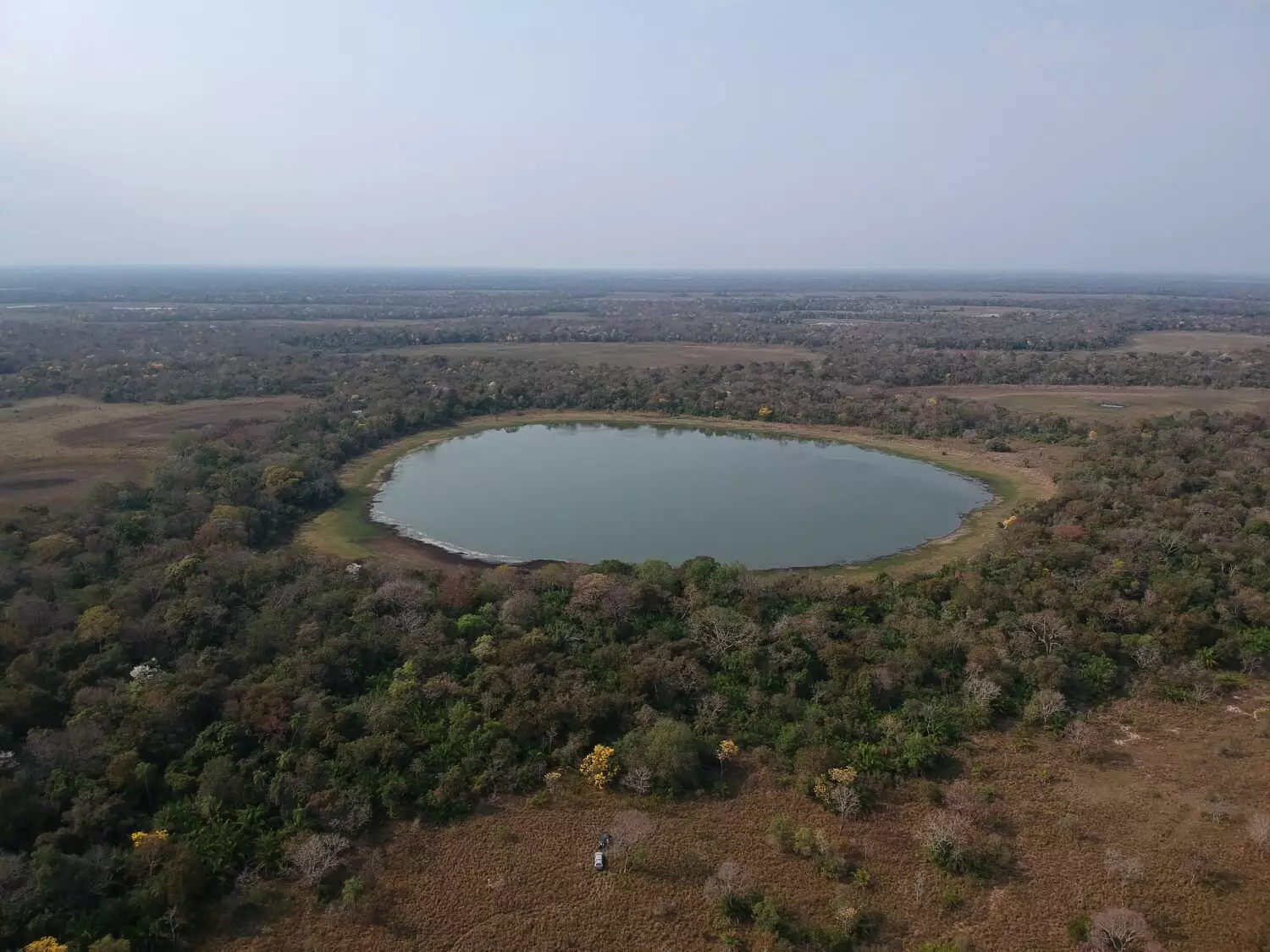The Pantanal, recognized as the world’s largest tropical wetland, spans an expansive 153,000 square kilometers. This unique ecosystem predominantly resides in the southwestern region of Brazil, with minor portions extending into Bolivia and Paraguay. A distinguishing feature of the Pantanal is its intricate interplay between wet and dry seasons, which not only supports a rich biodiversity but also plays a pivotal role in the region’s emissions of greenhouse gases, such as methane and carbon dioxide. A recent study spearheaded by Brazilian researchers from the University of São Paulo (USP) and the Federal University of São Carlos (UFSCar) shines a significant light on this relationship, demonstrating how the soda lakes within this biome react to seasonal variations and extreme weather events.
The Pantanal contains approximately 900 soda lakes, which are characterized by their shallow and highly alkaline environments. These lakes feature a remarkably high pH, often reaching levels as elevated as 11, alongside an abundance of carbonates and bicarbonates. This chemical landscape has considerable implications for the microbial ecosystems thriving within these habitats. The study published in the journal *Science of the Total Environment* emphasizes the need for a more nuanced understanding of how microbial communities contribute to the emission of greenhouse gases in these ecosystems, arguing that traditional models must integrate these biological factors to fully grasp the dynamics at play.
As the seasons change, so too does the behavior of the soda lakes and the emissions they produce. The researchers identified three primary classifications of these lakes based on the respective chemical compositions and biological communities present: eutrophic turbid (ET), oligotrophic turbid (OT), and clear vegetated oligotrophic (CVO). ET lakes, with their nutrient-rich conditions, exhibited the highest levels of methane emissions. This phenomenon is likely tied to the proliferation of cyanobacterial blooms and the decomposition of organic matter, fueled by the unique conditions of drought. In stark contrast, the OT lakes did not produce methane, possibly due to their high sulfate levels; however, they still released notable amounts of carbon dioxide and nitrous oxide into the atmosphere.
The Pantanal has recently been besieged by extreme weather patterns, notably severe droughts and rampant wildfires. These phenomena, exemplified by over 22,000 wildfires recorded in 2020 alone, have triggered drastic changes in the wetland’s hydrology and ecology. Satellite imagery from the past two decades captures a concerning trend: a significant reduction in water coverage complemented by an alarming increase in cyanobacterial populations. These transformations are not merely aesthetic; they herald significant implications for greenhouse gas emissions, as noted by researcher Thierry Alexandre Pellegrinetti, who underscores how climate change exacerbates these shifts.
Despite covering only a mere 5% to 8% of the Earth’s surface, wetlands, including the Pantanal, are astonishingly effective at carbon storage, sequestering between 20% and 30% of the world’s soil carbon. This underscores the critical role these ecosystems play in regulating atmospheric greenhouse gases. With its unique biodiversity—home to over 2,000 plant species and 580 bird species—the Pantanal’s soda lakes contribute significantly to broader ecological functions. However, the growing prevalence of cyanobacterial blooms observed may turn these once-stable environments into substantial sources of greenhouse gases.
At the heart of the functioning of these soda lakes lies the microbial community, which underpins the region’s ecological processes. As articulated by microbiologist Simone Raposo Cotta, microorganisms are instrumental in nutrient cycling, profoundly affecting the ecological balance. The ongoing research delves into the diverse lifestyles of these bacteria, revealing their remarkable adaptability to shifting environmental conditions. During the dry season, certain cyanobacteria can absorb carbon dioxide, whereas favorable wet conditions facilitate bacterial proliferation. This resilience underscores the importance of microorganisms in maintaining ecological stability in the face of escalating climate challenges.
Despite significant strides in understanding the interplay between microbial contributions and greenhouse gas emissions, knowledge gaps remain. Researchers are actively exploring questions surrounding the precise impact of soda lakes on overall Pantanal emissions and developing models to address these critical issues. As the transformations in these lakes continue, understanding their geological and biogeochemical dynamics becomes imperative to conserve this vital ecosystem. With ongoing research, scientists aim to better predict the responses of these ecosystems to future environmental alterations, thereby contributing a crucial piece to the puzzle of global climate regulation.
The intricate relationship between seasonal variations, soda lakes, and greenhouse gas emissions highlights the urgent need for further study. As climate change continues to unfold, so does the critical importance of understanding and safeguarding the Pantanal wetlands and their unique ecosystems.


Leave a Reply